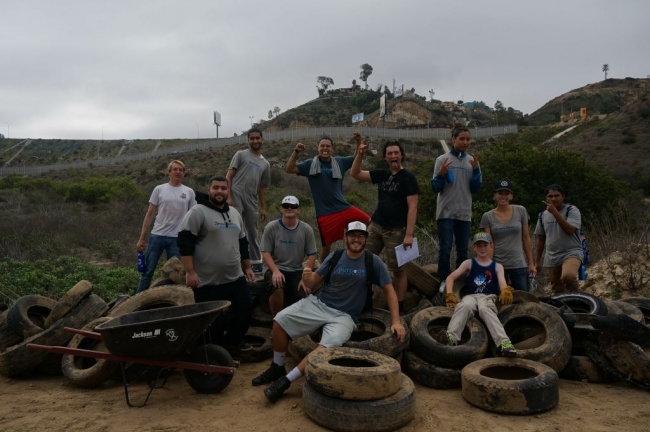California is home to 12% of the nation’s population, with 26 million people living in counties along its 3,427 mile coastline. The average American generates an average of 4.5 lbs of trash per day (EPA estimate as of 2017) multiplied by 26 million people, that's 117,000,000 lbs of trash generated just from California's coastal population for one day! Inevitably some portion of that waste is littered, lost, or “leaked” through waste management and can eventually reach California’s coastal ocean and become marine debris.
The marine debris issue has been recognized at the highest levels of government in California. In September 2018, former California Governor Jerry Brown made a public statement about the need to address the issue of single-use plastics in California. If we consult NOAA’s Marine Debris Program (MDP) Marine Debris Monitoring and Assessment Project (MDMAP) dataset, it would appear that Governor Brown is on to something. This will come as no surprise to veteran marine debris junkies, but single-use plastics are a major contributor to marine debris on the shoreline of California. Of the 146,770 items recorded in the MDMAP dataset from California shorelines, 71% are fragments (i.e., pieces of plastic, glass, or some other material type) or otherwise couldn’t be identified as a specific item. In fact, eight of the top ten most common items found on shorelines in California that are not fragments, are single-use plastics (see Table).
Our partners in California not only take the issue of marine debris very seriously, but are taking bold steps to address it, particularly single-use plastics. A variety of state and local marine debris reduction policies have been enacted, including a number of bans and restrictions on single-use plastics and broad stormwater regulations that are aimed at capturing trash before it reaches waterways. To increase collaboration among marine debris entities in the state, the MDP has partnered with the California Ocean Protection Council to convene stakeholders to develop and implement the California Ocean Litter Prevention Strategy (OLS). With more than 50 different organizations participating in the OLS process, it serves a robust guiding document and framework upon which we can track progress over time.
In addition to stakeholder coordination through the OLS, the MDP is proud to directly support a number of projects in California through competitive grant opportunities. With funding through a NOAA Marine Debris Program Research Grant, scientists at the University of California Riverside recently kicked off a two year project to examine the source, pathway, and fate of microplastics in the Southern California Bight. The project’s ultimate goal is to inform more effective management efforts.

In the San Francisco Bay Region, the Richardson Bay Regional Agency is working to remove abandoned and deteriorated vessels from a portion of the Bay that has been a hotbed for illegal anchorages. The removal of these vessels will protect one of the largest remaining areas of eelgrass habitat in the estuary, which supports a variety of marine species. Stay tuned later this week to learn more about this specific removal project.
In addition to those new projects, Surfrider San Francisco is continuing to prevent cigarette butt litter through their cheekily-named “Hold on to your Butt” project, and the Southwest Wetland Interpretive Association and the Tijuana River National Estuarine Research Reserve are implementing efforts to prevent and capture cross-border debris before it reaches the Pacific Ocean.
Organizations, individuals, and volunteers from across the state are contributing an enormous and noble amount of time and energy to make California a national leader on addressing and preventing marine debris. The MDP is honored to assist some of these efforts and promote the great accomplishments across government, non-profit, academic, and industry sectors. Stay tuned to the MDP blog this week for more updates from active projects in the state!



California coast line is 840 miles, not 3400 miles!!